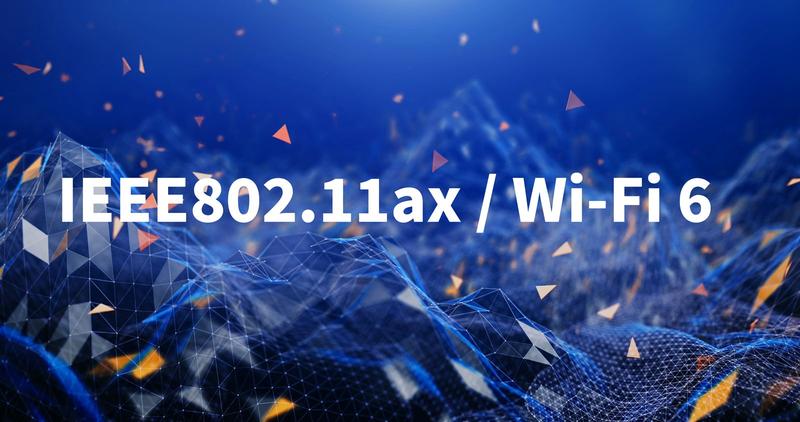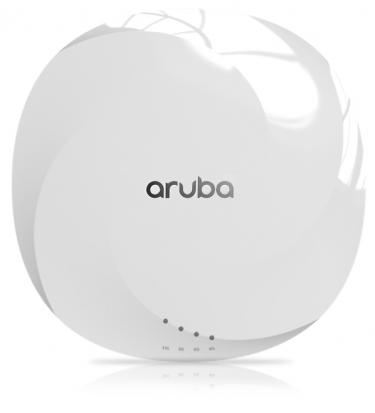Comparison of 10 recommended wireless LANs for offices and corporations!Explains the difference from home use and how to choose
As the number of companies using smartphones and notebook PCs in the office is increasing, building a comfortable wireless LAN environment is an important factor for improving work efficiency. However, there may be many people in charge who are worried about selecting the equipment necessary to build a wireless LAN environment for the office. There is a difference between wireless LAN for offices and corporations and wireless LAN for home use, and if you introduce wireless LAN for home use in your office, you may have trouble connecting to the wireless LAN.
In this article, we will introduce the features of wireless LAN for corporations, differences from wireless LAN for home use, points for selecting equipment, and recommended products. Let's introduce a comfortable wireless LAN environment to the office by referring to this article.
- Differences between office / corporate wireless LAN and home wireless LAN
- Differences in wireless LAN standards and frequencies
- Thorough comparison of 10 recommended wireless LANs for corporations
- Two points on how to choose a wireless LAN for corporations
- summary
Differences between office / corporate wireless LAN and home wireless LAN
Wireless LAN refers to a LAN (Local Area Network) connected wirelessly. Wi-Fi, which we often hear, is one of the wireless LAN standards. To build a wireless LAN environment, you need a line that can connect to the Internet and a wireless LAN device. This item explains the differences in equipment and environment between office / corporate wireless LAN and home wireless LAN.
1. Differences between the basic configuration of wireless LAN for offices and corporations and wireless LAN for home use
There are three major differences between office / corporate wireless LAN and home wireless LAN.
For home wireless LAN, a "wireless LAN router" that integrates the router function and the wireless LAN access point function is required. On the other hand, for offices and corporations, there are many products with a single wireless access point that has only a wireless LAN access point function, assuming that a router required for communication between LANs has already been installed.
As for the number of simultaneous connections, most home wireless LANs are about 10 to 30 units, while office / corporate wireless LANs can be connected to 128 units per unit.
Also, regarding the security function, wireless LAN for offices and corporations can be linked with the wireless LAN controller described later to enable advanced connection monitoring and prevention of unauthorized access.
2. Differences between wireless LAN access points and controllers
A wireless LAN access point is a device that emits wireless LAN radio waves and provides communication to devices. In wireless LAN for offices and corporations, access points and controllers that manage each access point can be linked.
By using the wireless LAN controller, you can build a flexible wireless LAN environment using the following advanced functions.
When installing dozens of access points in an office, installing a controller will improve security and significantly reduce management costs.
Differences in wireless LAN standards and frequencies
There are some standards and frequency differences in wireless LAN. This item explains the differences between the main wireless LAN standards and frequencies.
1, 3 main wireless LAN standards
There are the following three types of mainstream wireless LAN standards today.
| Standard name | Maximum communication speed | Frequency band |
|---|---|---|
| IEEE802.11n (Wi-Fi4) | 600Mbps | 2.4GHz band / 5GHz band |
| IEEE802.11ac (Wi-Fi5) | 6.9Gbps | 5GHz band |
| IEEE802.11ax (Wi-Fi6) 9.6Gbps | 2.4GHz band | 5GHz band |
The lower the standard, the newer the standard, and now IEEE802.11ax (Wi-Fi6) is the latest. The latest is the faster the maximum communication speed, but since IEEE802.11ax (Wi-Fi6) is still a new standard, the current mainstream is IEEE802.11ac (Wi-Fi5).
When choosing an access point, make sure that the device you are using and the access point comply with the standard before installing it.
2, difference in wireless LAN frequency
Wireless LAN radio waves have two frequency bands, 2.4GHz and 5GHz. The difference is the range of radio waves and the susceptibility to interference.
Since the 2.4GHz band has a low frequency and is strong against obstacles such as walls, it has the characteristic that radio waves can easily reach far away. However, since the 2.4GHz band is also used in home appliances such as microwave ovens and Bluetooth, it may interfere with each other and weaken the radio waves.
On the other hand, the 5GHz band is a Wi-Fi-only radio wave, so it does not interfere with the radio waves of other home appliances and enables stable communication. However, because it is vulnerable to obstacles such as walls, radio waves may not reach or the communication speed may drop depending on the installation location.
It is recommended to use the 2.4GHz band when crossing multiple obstacles such as between living rooms, and the 5GHz band when using only the conference room and there are no obstacles.

Thorough comparison of 10 recommended wireless LANs for corporations
Now that we have explained the points when choosing a wireless LAN device for corporations, we will introduce and compare specific recommended products. We will focus on each point and introduce them, so please refer to them.
"ACERA 950" Furuno Systems Co., Ltd.
POINTA wireless LAN access point provided by Furuno Systems that has been installed in many companies and public facilities. It has excellent cost performance in terms of price and communication quality. In particular, the ACERA 950 is intended to be used in educational settings, and is designed so that radio wave interference is unlikely to occur even if dozens of people connect at the same time.
It is a product that can be used regardless of the scale of use because it can be easily installed and expanded from a single access point. The access point can be linked with his controller, which will be described later, and it will be possible to build a larger and more flexible wireless LAN environment.
"Wi-Fi for corporations (wireless LAN)" BUFFALO Inc.
POINTIt is a wireless LAN access point for corporations provided by BUFFALO. BUFFALO has a wide lineup that can be used in various situations, indoors and outdoors, from home to corporate use.
There is also an access point with a maximum of 384 simultaneous connections, making it easy to handle even large-scale installation environments for corporations. The price is relatively low and the cost performance is good, so it is an easy product to consider as one of the options.
"Wi-Fi for corporations (access point / PoE wireless access point)" ELECOM Co., Ltd. (wireless AP)
POINTSimilar to BUFFALO, ELECOM has a wide lineup of wireless LAN access points that can be used in a variety of situations, from home to corporate use, both indoors and outdoors.
It is also attractive that access points of models compatible with Wi-Fi 6 are also sold at a relatively low price. Especially for the introduction to accommodation facilities, there is a service that supports the introduction and operation and maintenance with an initial survey cost of 0 yen, and the support is also substantial.
"Giga Raku Wi-Fi" Nippon Telegraph and Telephone East Corporation (NTT East)
POINTGiga-Raku Wi-Fi is an attractive service that does not require detailed settings and can be used immediately if you have an internet connection. Since you will receive the configured wireless LAN access point, you can build a wireless LAN environment just by connecting the LAN cable. NTT East provides the service, and with 365 days of support, you can rest assured even if a problem occurs.
Since it is a subscription service for each installed unit, the total cost may be high when operating a large number of units for a long period of time, but it is a service suitable for smooth introduction to small-scale environments.
"Cisco Meraki" Cisco Systems GK
POINTCisco Meraki is an IT solution that manages various appliances in the cloud. The Cisco Meraki MR series in the appliance is a cloud-based wireless LAN access point.
The access point is a rental type, and you can use it without any hassle by automatically downloading the settings just by plugging in the LAN cable. Since it can also be used as a wireless controller on the cloud, you can build an advanced wireless LAN environment simply by installing Cisco Meraki.
It can also work with Cisco Umbrella to introduce security features optimized for wireless LAN environments.
"H3C" H3C Japan Technologies GK
POINTThe appeal of the H3C access point is that it can be flexibly switched according to his various situations, such as the access point alone, the controller function, and the cloud management function, depending on the operation mode. In addition to excellent performance, stable wireless LAN communication can be realized by switching the operation mode according to the environment.
Similar to Cisco Meraki, cloud management enables integrated management of his entire network in real time, including access to the wireless LAN environment and terminal connection status.
"FortiAP" FortiNet Japan Co., Ltd.
POINTFortinet, which provides FotiAP, is a company specializing in security that also provides firewalls, etc., and its high security is also attractive for wireless LAN. The access point itself has a lot of security functions, but by combining it with the company's firewall product ForiGate, you will be able to build a more secure wireless environment.
The FortiAP remote access point series allows administrators to define security policies. By making it possible to connect only matched wireless access to the wired LAN, he can prevent unauthorized access to the company network from wireless connection devices via access points and reduce the risk of information leakage and virus infection. I can do it.
"AXprimo W" Alaxala Networks Co., Ltd.
POINTAluxara Networks is a company that is strong in network equipment, and the AXprimo W series wireless LAN access point is also a product that has excellent cost performance and can build a wireless LAN environment that enables stable communication.
By unifying not only wireless LAN access points and controllers but also core switches and edge switches with Araxara, synergies will be more effective. It is also attractive that it comes with an 8-year warranty service after purchase, so you can operate it for a long time with peace of mind.
"Business Wi-Fi" USEN ICT Solutions Corporation
POINTUSEN GATE O2 is a cloud-based wireless LAN access point rental service. You can easily build a wireless LAN environment without the need to set and manage individual access points. Since you can also manage using the wireless LAN controller function on the cloud, you can check the connection status and logs in real time from the management site.
Although it depends on the price plan, it is attractive that it is low cost among the same cloud-type wireless LAN access point rental services.
"Relay 2" T-Gaia Corporation
POINTRelay2 is a cloud-type wireless LAN access point and features an edge computing function. High performance can be achieved by combining the functions of both the network and the server with the network computing function.
Other companies have access points that can use server functions such as RADIUS and DHCP, but Relay2 has more functions such as a function as a cache server for web contents. It is possible to build a high-quality wireless LAN environment without incurring the cost of building and operating a server in-house.
Two points on how to choose a wireless LAN for corporations
There are many products available for wireless LAN, so many people may not know which one to choose. So, from here, we will look at two points when choosing a wireless LAN device for corporations.
1. Equipment specifications and installation location
When choosing a corporate wireless LAN device, check the expected number of simultaneous connections and installation location.
If you connect from terminals that exceed the number of simultaneous access points at the same time, communication delays or disconnections may occur. Assuming that the number of IT devices connected to wireless LAN will increase in the future due to the development of IoT, let's select a device with a margin.
Also, according to the installation environment, check the range where you want to deliver radio waves and the presence of obstacles, and use the appropriate frequency band. If the device is equipped with a wireless band steering function, it is possible to determine the signal strength and frequency band of surrounding wireless LAN devices and automatically sort them to the optimum frequency band. Therefore, stable communication is easy.
If the installation location is outdoors, it is necessary to check whether the access point is for outdoor use and whether there are any problems with the guaranteed operating temperature, waterproof / dustproof / corrosion resistance.
2, security function
Security measures are extremely important for wireless LAN because it may be accessible to anyone within the reach of radio waves.
First of all, wireless LAN devices have standards for authentication and encryption. There are three main standards: WPA (TKIP), WPA (AES), and WPA2 (TKIP / AES). The current mainstream is WPA2 (AES), so be sure to choose a compatible product.
In addition, it has basic security functions such as a privacy separator function that prevents terminals connected to the same wireless LAN device from communicating with each other and MAC address filtering that allows only connections from terminals registered in advance. It is also important to check if it is.
In addition to these security functions, it is advisable to consider more advanced security measures such as installing a wireless LAN controller to keep the firmware of the access point up-to-date, and installing an intrusion detection / prevention system.
summary
In this article, we introduced the features of wireless LAN for corporations, points for selecting equipment, and recommended products.
The major differences between office / corporate wireless LAN and home wireless LAN are the presence / absence of a router function, the number of simultaneous connections, and advanced security functions.
Since office / corporate wireless LAN is expected to be installed in the existing network environment, it often does not have a router function, and it can handle a larger number of simultaneous connections than home wireless LAN and has advanced security functions. I am. In addition, in wireless LAN for offices and corporations, by linking the access point and the controller, it is possible to improve security while reducing management costs.
Wireless LAN has different maximum communication speeds and compatible frequencies depending on the standard. Since there are differences in the range of radio waves and the penetrating power for obstacles depending on the frequency band, try to suppress the differences in standards and frequencies.
Based on this information, when choosing a wireless LAN for corporations, it is recommended to focus on checking the specifications of the device and the installed security functions according to the connection scale and installation environment.
If you are considering building a wireless LAN environment in your company, why not request the product materials first.


![[Osaka Marriott Miyako Hotel] Plenty of cheese! Italian buffet held company release | Nikkan Kogyo Shimbun electronic version](https://website-google-hk.oss-cn-hongkong.aliyuncs.com/drawing/article_results_9/2022/3/28/1061eb31530c979d7b766ae1877b113a_0.jpeg)




